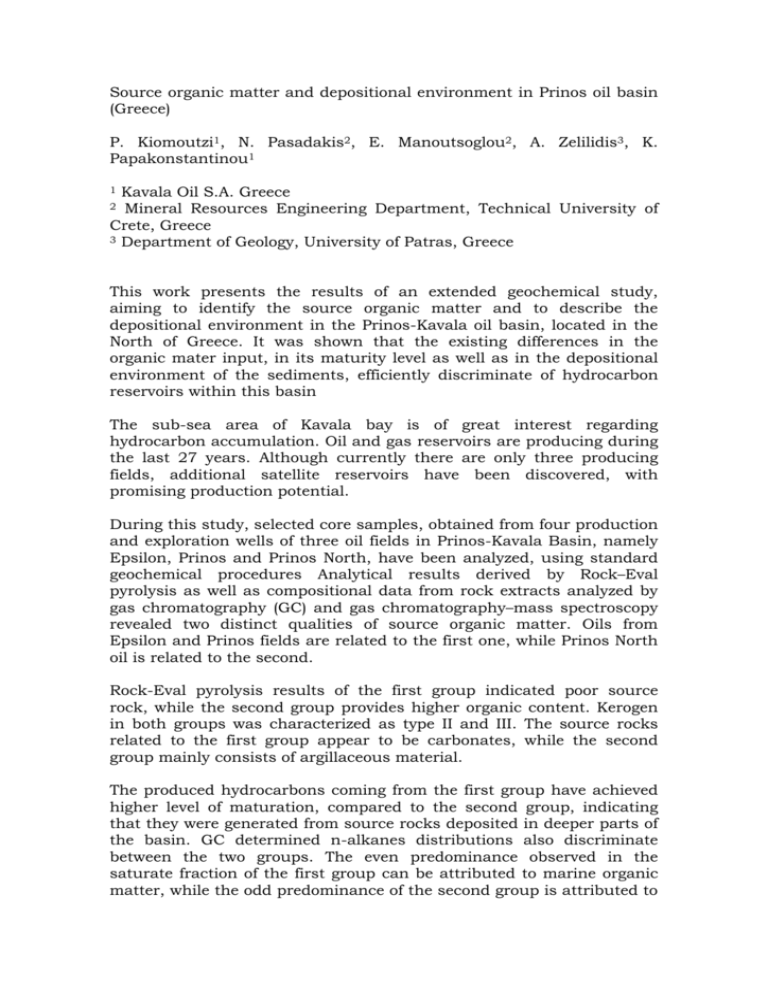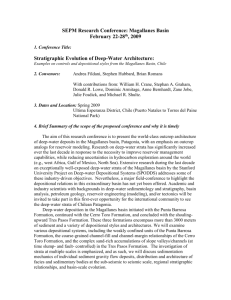EPSILON--1 EXPLORATION WELL
advertisement

Source organic matter and depositional environment in Prinos oil basin (Greece) P. Kiomoutzi1, N. Pasadakis2, E. Manoutsoglou2, A. Zelilidis3, K. Papakonstantinou1 Kavala Oil S.A. Greece Mineral Resources Engineering Department, Technical University of Crete, Greece 3 Department of Geology, University of Patras, Greece 1 2 This work presents the results of an extended geochemical study, aiming to identify the source organic matter and to describe the depositional environment in the Prinos-Kavala oil basin, located in the North of Greece. It was shown that the existing differences in the organic mater input, in its maturity level as well as in the depositional environment of the sediments, efficiently discriminate of hydrocarbon reservoirs within this basin The sub-sea area of Kavala bay is of great interest regarding hydrocarbon accumulation. Oil and gas reservoirs are producing during the last 27 years. Although currently there are only three producing fields, additional satellite reservoirs have been discovered, with promising production potential. During this study, selected core samples, obtained from four production and exploration wells of three oil fields in Prinos-Kavala Basin, namely Epsilon, Prinos and Prinos North, have been analyzed, using standard geochemical procedures Analytical results derived by Rock–Eval pyrolysis as well as compositional data from rock extracts analyzed by gas chromatography (GC) and gas chromatography–mass spectroscopy revealed two distinct qualities of source organic matter. Oils from Epsilon and Prinos fields are related to the first one, while Prinos North oil is related to the second. Rock-Eval pyrolysis results of the first group indicated poor source rock, while the second group provides higher organic content. Kerogen in both groups was characterized as type II and III. The source rocks related to the first group appear to be carbonates, while the second group mainly consists of argillaceous material. The produced hydrocarbons coming from the first group have achieved higher level of maturation, compared to the second group, indicating that they were generated from source rocks deposited in deeper parts of the basin. GC determined n-alkanes distributions also discriminate between the two groups. The even predominance observed in the saturate fraction of the first group can be attributed to marine organic matter, while the odd predominance of the second group is attributed to higher plant, terrestrial organic input. The analysis of hopanes and steranes biomarkers led to similar conclusions A hyper saline, strongly reducing environment was determined in both cases. Finally, the existing differences between the two groups were clearly visualized by using Principal Component Analysis.






